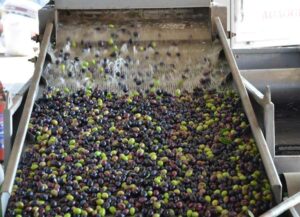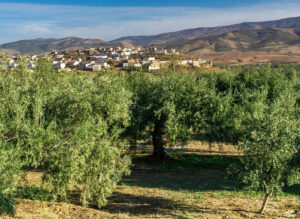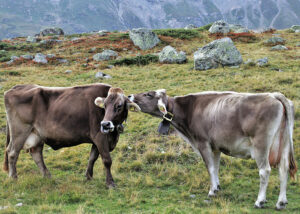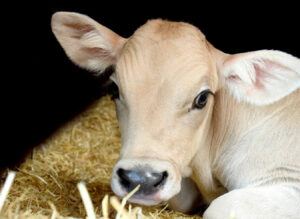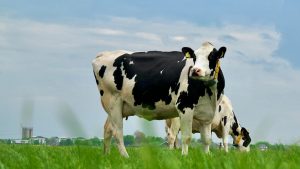Alvaro Garcia
The wine industry leaves behind an interesting coproduct which is called grape pomace. It consists of the solids that remain of grapes after they are pressed to remove its juice, and it contains the skins, pulp, seeds, and stems. In the alcohol beverage industry, water is added and allowed to ferment to produce “grappa”, a well-known alcoholic beverage originating in Italy.
Grape pomace is also used nowadays as a feedstuff for cattle, fertilizer, or to extract from its bioactive compounds such as polyphenols. Nearly nine million tons are produced annually around the world, with well-known wine regions being the main source of it. Its availability is not to be discounted since they constitute one fourth of the grape weight before its fermented into wine.
The dairy industry is well known for producing highly valued dairy products however it is also blamed for increasing the carbon footprint of agriculture. Industry coproducts such as grape pomace which are relatively inexpensive and need to be disposed-off in an environmentally friendly way are often used as feedstuffs in dairy cow diets. In addition, they are also considered not contributing significant volumes of greenhouse gases, since any emitted are mostly assigned to the primary product, in this case the alcohol beverages.
Grape pomace is rich in condensed tannins which have been shown to reduce methane production when fed to ruminants. In addition, these coproducts reduced in milk fat with higher proportions of polyunsaturated fatty acids which are beneficial to human health. In countries with grass-fed dairy systems and a strong wine industry, such as Australia, this coproduct is used to stretch the forage supply and not overgraze pastures during the dry months of the year.
In the US and particularly in the wine region of the west coast, the use of grape pomace has been also a tradition, mostly to reduce feed costs. There is not much information though on its nutritional value and its variability depending on the types of grapes used to make wine. As a result, there is also not enough research performed on its effect on dairy cow milk production. There’s not much research on its relatively high concentration of polyphenols and their impact on methane production emissions.
Grape pomace is also relatively high in lignin and lignin-bound structural carbohydrates, which results in a poor utilization along the digestive reducing its concentration in metabolizable energy when compared to other coproducts. Grape pomace has also high concentrations of oil (0.52 to 18.5% dry matter; DM) and tannins (0.69 to 13.9% DM) which have both been demonstrated to be able to reduce enteric methane production up to 20%. The oil and tannin concentrations in grape pomace vary depending upon many factors, such as grape varieties, and the processes employed to make the different types of wine.
Past research has demonstrated that grapes used in producing red wine result in a pomace with more tannins than that of white wine, with reductions in methane emissions when fed to cows 13% higher than with white grape pomace. Feeding excessive amounts of red grape pomace can also reduce milk yield, energy corrected milk (ECM), milks fat, protein and lactose. This was confirmed by other studies which have shown that limiting purple or red grape pomace to 10% of the diet dry matter resulted in no effects on yields of milk fat, protein or lactose.
Based on these previous results, a recent experiment (Moate et al.2020) looked at the effects on milk yield, milk composition and methane emissions of dairy cows fed harvested perennial ryegrass (Lolium perenne L.), which was partially replaced with either red (RGP) or white grape pomace (WGP).
Thirty-two Holstein dairy cows in early lactation were offered one of three diets:
- Control: with 15.0 kg DM of freshly harvested perennial ryegrass + 5.2 kg of concentrate.
- Treatment RGP: 10 kg DM of ryegrass replaced with 5 kg DM of red grape pomace + 5.2 kg of concentrate.
- Treatment WGP: 10 kg DM of ryegrass replaced with 5 kg DM of white grape pomace + 5.2 kg of concentrate.
The concentrate consisted of 3.0 kg DM of cracked corn, 2.0 kg DM of cold pressed canola, and 0.2 kg of minerals. The concentrate was offered first allowing 30 min for the cows to consume it, any remaining concentrate was removed and weighed. The pomace portion was then offered, and cows were allowed 1 h to consume it. Cows offered the control treatment received harvested pasture after their concentrate, while cows offered the RGP and WGP treatments received the pasture after the pomace.
The results showed that the concentration of tannins in the RGP was lower than the WGP. Dry matter intakes of pasture, and pomace were different as per experimental design, with pomace diets having less ME and less intake of CP, but more of NDF, fat and lignin. Both pomace diets supplied similar amounts of ME, CP, lignin and OM, but the RGP diet supplied more NDF and fat than the WGP.
How grape pomace diets affect milk production performance?
The average milk yield and ECM of cows offered grape pomace were less than the CON diet. Both pomace diets reduced production of milk fat, protein and lactose as well as the yield of milk fat plus protein (FP) compared to the CON. Both pomace diets resulted in similar yields of milk, ECM, fat, protein or lactose.
Milk fat concentration was lower for cows fed RGP compared to the other two diets. Concentrations of milk protein in cows fed either pomace were lower than in milk from cows fed the CON diet, but with no differences between them. Concentrations of C10:1, C14:1, C16:0 and total de-novo fatty acids were all lower in the milk fat from cows fed RGP compared to those fed WGP.
Cows offered pomace had lower methane emissions and methane yields (g/kg DMI) than the CON diet. Dietary treatment however had no effect on methane yield when expressed as (g/kg potentially fermentable OM) and no effect on methane intensity (g/kg ECM). There was no effect of type of pomace on any of the methane variables measured.
Partial replacement of chopped perennial ryegrass with either RGP or WGP resulted in reduced production performance and methane emissions and methane yields (g/kg DM), with no differences between either pomace diet.
Both diets containing pomace decreased milk yields by 10% and methane emissions by 15%. When fed to dairy cows, grape pomace reduces methane emissions but at the cost of decreased milk production.
Reference
Peter J Moate, Joe L Jacobs, Josh L Hixson, Matthew H Deighton, Murray C Hannah, Greg L Morris, Brigid E Ribaux, William J Wales, S Richard O Williams. Effects of Feeding Either Red or White Grape Marc on Milk Production and Methane Emissions from Early-Lactation Dairy Cows. Animals (Basel). 2020 Jun 4;10(6): E976.
© 2020 Dairy Knowledge Center. All Rights Reserved.



